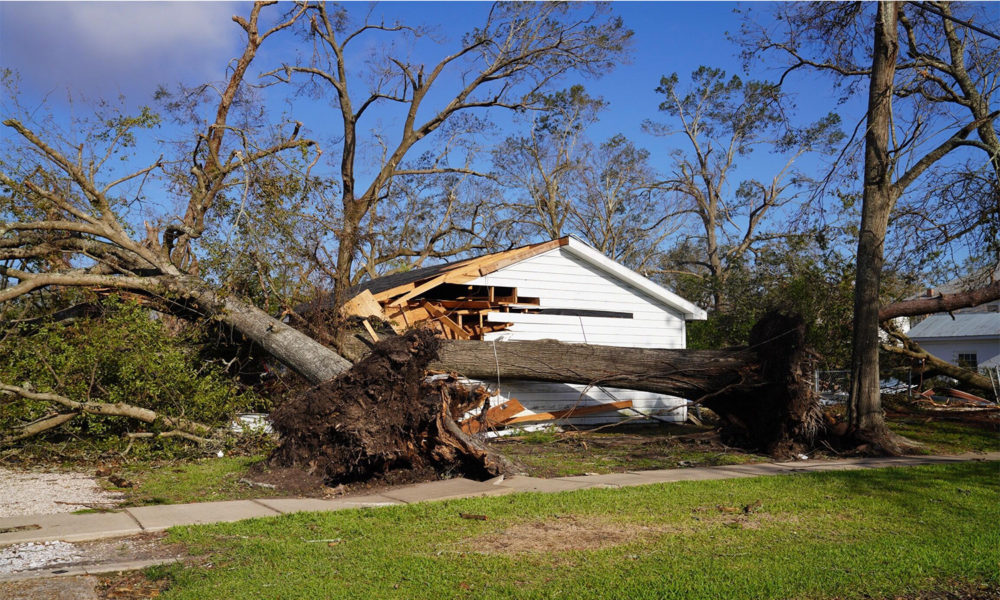In Westlake Louisiana, near Lake Charles, a chemical manufacturing plant fire last week increased the public health threat environmental justice communities are already facing. The fire released chlorine gas into the air, leading to a ‘stay at home’ order for residents who had not evacuated in anticipation of Hurricane Laura. Because of that order, and directions to keep windows and doors closed and not use air conditioners, depending on their situations, people may have been at an increased risk of COVID-19 infection and adverse health effects from the chlorine gas, on top of the danger from Hurricane Laura.
Earlier this summer, I wrote a blog post about EPA’s Temporary COVID-19 Enforcement Policy, which was issued on March 26 but was retroactive to March 13. In that post, I discussed my concern for communities that would be left unprotected once the policy–which allows polluters to self-regulate–went into effect. As I stated then, the order did not mention industries or facilities by name, so we are unable to specifically identify them. It described their activities, such as facilities engaged in animal feeding operations, facilities which suffer from failure of air emission control or wastewater or waste treatment systems or other facility equipment or generators of hazardous waste under the Resource Conservation and Recovery Act (RCRA). These types of facilities have historically plagued environmental justice communities, contributing to environmental pollution and endangering lives.
Apparently EPA took offense to the concerns raised about this order and issued a statement on March 30, which was supposed to clarify its intent in deciding to temporarily halt enforcement. EPA stated that it still expected the regulated facilities or entities to “comply with all obligations” but if that didn’t happen, EPA will consider the pandemic, on a case-by-case basis, when determining an appropriate response.
So, the problem remained–EPA allowed facilities to “not comply” with regulatory obligations, as long as they could show that COVID-19 was the reason. EPA stated that it developed the temporary policy “to allow EPA to prioritize its resources to respond to acute risks and imminent threats, rather than making upfront case-by-case determinations regarding routine monitoring and reporting.” EPA further stated that the policy development was a “group effort, involving multiple calls with and drafts shared among EPA staff and managers, both career and political, at both headquarters and in the regions.”
My questions are: 1) what did you do to respond to acute risks and imminent threats, and 2) did you talk with any communities whose lives were placed in greater jeopardy as a result of this order?
To answer the second question, I direct your attention to an April 6 letter EPA released titled “UPDATED: What They Are Saying: Public Officials and Stakeholders Voice Support for EPA’s Discretion Policy for COVID-19 Pandemic.” I immediately assumed that EPA spoke with community groups as they are most definitely stakeholders when it comes to environmental protections, right? One definition of stakeholder is “one who is involved in or affected by a course of action.” Communities were DEFINITELY affected by the temporary order! And yet, communities, particularly environmental justice communities, are not listed in this letter of support. So much for community involvement, right? This letter is EPA paying lip service to stakeholder consultation, not really truly engaging in it.
Now, I want to remind you about the Biolab chemical fire that burned for more than 50 hours over three days near Lake Charles, Louisiana, which is close to Cancer Alley, releasing chlorine gas into neighboring communities–almost all environmental justice communities, like Mossville, a community founded by formerly enslaved people at the end of the Civil War.
As a result of the fire–during and probably after–there were very real concerns about the possibility of toxic runoff from the site as well as potential exposures to toxic chlorine gas, as the chemicals manufactured at the site can create the gas when they come into contact with water. Although the facility had shut down in advance of the storm, for most facilities, chemical releases can be a part of the shutdown process, which can lead to inhalation exposures.
Most residents evacuated the surrounding areas in anticipation of Hurricane Laura, but not everyone has that option, as described in a blog post by my colleague Juan Declet-Barreto and in an interview blog post with two community leaders. In the communities near the Biolab fire, those remaining were under a shelter-in-place advisory by Gov. John Bel Edwards. They were told to turn off air conditioning and close their windows and doors to avoid exposure to the deadly gas and other contaminants. In the face of COVID-19, these types of measures–while warranted–are untenable.
Communities should not be put in situations like this, where they are forced to stay inside with no air conditioning or access to fresh air–sometimes in shelters and other locations where conditions were already not optimum for limiting the spread of COVID-19. This is a recipe for a disaster on top of a disaster!
So, back to EPA and its temporary enforcement (or rather, non-enforcement) order. Compliance with certain environmental obligations was excluded from the temporary order, including:
- Criminal violations;
- Conditions of probation;
- Superfund activities;
- Resource Conservation and Recovery Act (RCRA) site engaging in Corrective Action activities;
- Imports (e.g., pesticide products);
- Non-reporting obligations under settlement agreements and consent decrees (unless agreed to by EPA or DOJ, as applicable)
The Biolab facility, for example, produced pool chemicals. It is not listed as a Superfund site, and is not an RCRA site undergoing corrective activities, or any of the above criteria for exclusion. That suggests that it could have enjoyed the leniency afforded by EPA’s temporary order.
For me, this begs the question: Could EPA’s order suspending oversight have played a role in the chemical fire?
Most people are not aware that on June 29, EPA issued a memo on a termination addendum to the COVID-19 temporary enforcement policy. That addendum revised the March order to include information that the order, which originally had no termination date, would end on August 31. So, five days after Hurricane Laura hit Louisiana and four days after the devastating Biolab chemical fire, EPA’s March 26 order on noncompliance for covered facilities expired.
But what affect did that initial order, which was in effect for more than five weeks before the fire, have on the structural integrity of these facilities and their ability to withstand extreme weather events? Policies like these do very little to incentivize such facilities to make changes that would ensure they could withstand extreme weather events.
Should we expect other incidences similar to what happened in Lake Charles as the hurricane season – in the midst of a pandemic – continues and are those incidences residual effects of that initial order? Remember, we are not even half-way through hurricane season, which officially ends on November 30.
Earlier in this blog, I listed EPA’s reasoning behind that initial temporary order – to allow it to “prioritize its resources to respond to acute risks and imminent threats.” Reports state that EPA officials flew over the Biolab fire, examining the damage. Now my criticism is not that EPA observed the fire from a safe distance while communities had to shelter-in-place, with no access to fresh air or cooling units, in the middle of a pandemic, not at all. I am critical of the fact that the situation existed at all – that there was a chemical fire, that lives were put at extreme risk and that people were forced into situations that were at best, public health threats.
A more appropriate action would have been for EPA NOT to issue the temporary order removing oversight for covered facilities and instead to “prioritize its resources” to focus on eliminating the “imminent threat” posed by facilities like Biolab, to communities – more often than not environmental justice communities – particularly as climate change intensifies extreme weather, both in frequency and severity. I bet that had EPA included community stakeholders in its survey regarding satisfaction with the temporary order, the response would have been quite different.
Oh, and by the way, EPA, if you ever return to the mission of protecting the environment and public health, you can start with Cancer Alley.

